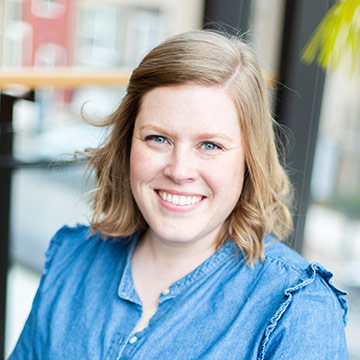We talk about Advent a lot around here this time of year. We talk about reading plans and Bible studies, candles and calendars. But what is Advent? Why and how do we celebrate it?
Advent, by definition, means “the arrival.”1 Advent, in this sense, is the coming of Christ. At Christmas time, we celebrate the first Advent of the Son of God in the incarnation. The church calendar, traditionally, celebrates Advent beginning the fourth Sunday before Christmas and going until Christmas Day.
We, as twenty-first century believers, celebrate the first Advent of Christ while looking forward to His second coming. In this way, it is both a celebration and an anticipation. The Christmas season gives us time to reflect on what it means that Jesus lived on earth, died for our sins, and rose again. It’s also a season where we are reminded that the story isn’t over—one day He will come again to right every wrong.
There are many rituals and traditions associated with Advent. Many churches light candles to represent peace, hope, joy, and love in the weeks leading up to Christmas. Some families participate with an Advent calendar, counting down the days to build excitement. Believers have observed Advent for centuries, but individual churches and families celebrate and honor the traditions in different ways.
The way we observe Advent may be different, but there are two things that we pray this season ushers in for us.
First, we pray that Advent will help us focus on Jesus in the weeks leading up to Christmas.
This year in our Advent study, we’re focusing on Emmanuel, God with us. In a year of isolation, grief, loneliness, frustration, and fear, our God is with us. He sent His Son to be with us. Advent celebrates the with-us-ness of the Creator of the universe. It celebrates that He never leaves us isolated or lonely. The Light entered this world of death and provided life. This season, we want to dwell on that truth.
Let’s delight in Him as we string twinkly lights and send cards to loved ones we cannot be with. Let’s put our hope in Him, the only One who fulfills every last promise. Let’s find peace in Him, even in the midst of an anything-but-peaceful world. And let’s love in His name.
Second, we pray that celebrating the first Advent will help us place our hopes in the future Advent, when Christ will return.
As we practice anticipation through the observance of Advent, let’s apply it to anticipating Christ’s return. We are a people who don’t love waiting. We like instant gratification, Amazon Prime Now, streaming shows, microwave meals. And yet, the Bible gives us plenty of examples of waiting—Abraham waited for Isaac, Israel to enter the promised land, David to become king, the prophets to see God’s word fulfilled, Eve for her offspring to crush the serpent’s head (Gen. 3:15).
Since Paul tells us the fruit of the Spirit looks like patience (Gal. 5:22-23), we need to learn to wait with love, joy, peace, and hope.
As we learn to wait well, others will take note. It’s weird and different to wait with joy. Let’s be prepared to point others to the hope of the second Advent, the hope we have in Christ.
What is Advent? The coming of Christ. Why and how should we celebrate it? As we practice anticipation—through reading God’s Word, lighting candles, spending time with family and friends, participating in church services, worshiping—we can also point others to that same hope, so that we can celebrate the next Advent together.
Fuel your worship of Christ this holiday season with our new Advent Bible study, O Come, O Come, Emmanuel, learn more about the study here.
1. Dictionary.com, s.v. “advent,” accessed October 21, 2020, https://www.dictionary.com/browse/advent?s=t.

Elizabeth Hyndman reads, writes, and tweets. Officially, she’s a social media strategist at Lifeway. Elizabeth grew up in Nashville, sips chai lattes every chance she can get, and believes everyone should have a “funny picture” pose at the ready.

